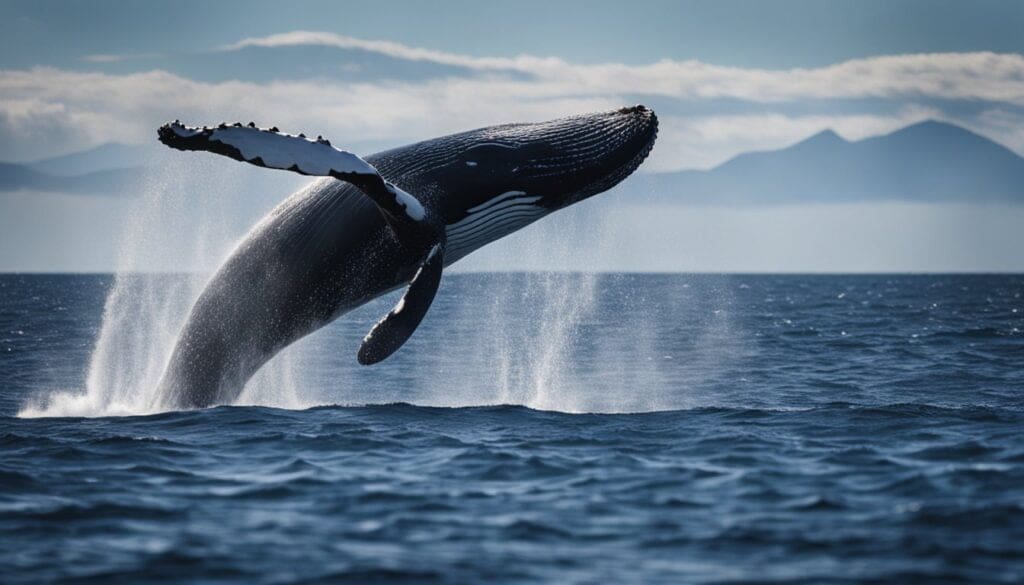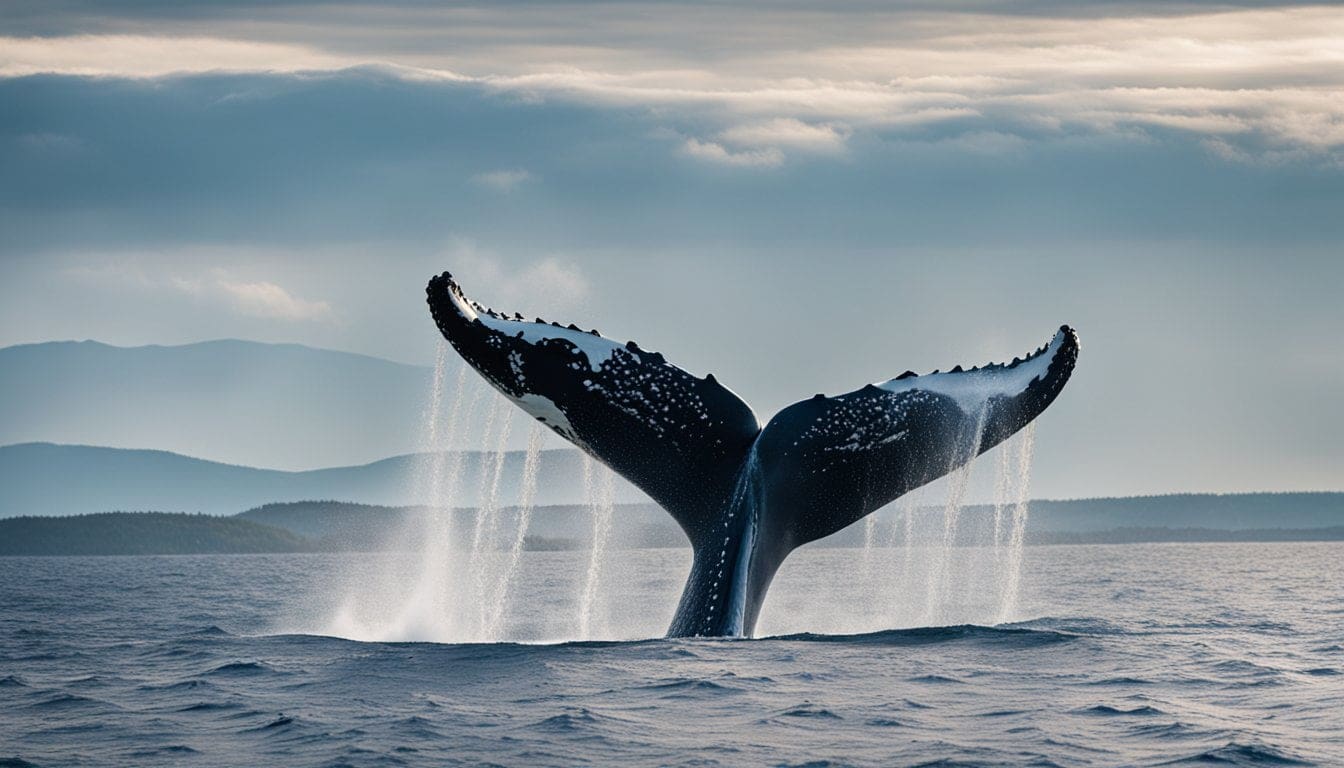Ultimate Whale Watching Guide: Tips and Tricks for a Memorable Experience
Whether you’re a first-timer or a seasoned watcher, this guide offers essential tips, ethical practices, and the best spots for encountering these ocean giants. Get ready for an unforgettable journey into the world of whales, packed with expert advice and a splash of fun! 🐳🌊
With the right whale watching guide, you can witness these majestic creatures up close and personal in their natural habitat. But with so many options available, choosing the right whale-watching tour can be overwhelming.
Whale watching is a popular activity worldwide, and for good reason. These gentle giants of the sea are awe-inspiring to watch, and seeing them in their natural habitat can be a truly humbling experience.
However, it’s important to approach whale-watching responsibly to ensure the safety of both the whales and the humans watching them. In this guide, we’ll cover everything you need to know to watch whales responsibly, including choosing the right tour, understanding whale behavior, and contributing to conservation efforts.
Whale Watching Guide: Tips and Strategies for Enjoyment
Whale watching is an exciting activity that allows you to observe these magnificent creatures in their natural habitat. If you are new to whale watching, here are some tips and strategies to help you get the most out of your experience:
1. Choose the Right Time and Place
The best time to go whale watching depends on the species you want to see. Some whales migrate to warmer waters during winter, while others can be seen year-round in certain areas. Research the species you want to see and the best time of year to see them in your chosen location.
2. Dress Appropriately
It’s important to dress appropriately for your whale-watching excursion. Wear comfortable, layered clothing that will keep you warm and dry. A hat and sunscreen are also recommended, as the sun can be intense on the water.
3. Listen to Your Guide
Your whale-watching guide is an expert on the local marine life and can provide valuable information about the whales you see. Listen carefully to their instructions and follow their lead when it comes to approaching the whales.
Different countries have different rules and regulations regarding whale watching, so it is important always to follow the guidelines set by local authorities. This will help ensure that the whales are not disturbed or harmed in any way.
4. Respect the Whales and other wildlife
Whale watching is a privilege, and respecting the whales and their habitat is important. Keep a safe distance from the whales and never try to touch or feed them. Remember that you are a guest in their home and should behave accordingly.
Whale watching can impact other wildlife in the area, so it is important to consider their needs as well. For example, avoid disturbing nesting birds or seals, and be careful not to damage delicate coral reefs when entering or exiting the water.
5. Keep Your Eyes Peeled
Whales can be difficult to spot, so it’s important to keep your eyes peeled for any signs of their presence. Look for spouts of water or air, flukes (tails), and dorsal fins breaking the water’s surface.
6. Learn About the Species
Whales are fascinating creatures, and learning about the species you are seeing can enhance your whale-watching experience. Research the different types of whales that can be seen in your chosen location and their unique characteristics.
7. Keep your distance.
While it might be tempting to try and get close to the whales, it is important to remember that they are wild animals and should not be approached too closely. It is recommended to stay at least 100m away from any whales or dolphins you encounter.
8. Avoid polluting the ocean.
Pollution is one of the biggest threats to marine life, so it is important to do your part to keep the ocean clean. Avoid throwing rubbish into the sea; report it to the authorities if you see any pollution.
9. Support responsible whale-watching operators.
When choosing a whale-watching tour, make sure to choose an operator that follows all the guidelines for responsible whale-watching. This will help ensure that the whales are not being disturbed or harmed in any way.
Whale watching can be a thrilling and educational experience. Following these tips and strategies ensures a safe and enjoyable excursion that respects the whales and their habitat.
What is Responsible Whale Watching?
Responsible whale watching is a set of guidelines and practices that are designed to protect whales and their habitat while providing a safe and enjoyable experience for people.
The International Whaling Commission (IWC) has established guidelines for responsible whale watching. These guidelines include maintaining a safe distance from the whales, not approaching them too quickly or too closely, and avoiding any behavior that could disturb or harm them. It is important to follow these guidelines to ensure that the whales are not stressed or harmed in any way.
Whale protection and conservation are also important aspects of responsible whale watching. Whales are an important part of the ocean ecosystem, and their well-being is crucial to maintaining a healthy environment. By practicing responsible whale watching, you can help protect these magnificent creatures and their habitat for generations to come.
Some ways to practice responsible whale watching include:
- Choosing a reputable whale-watching company that follows the IWC guidelines
- Respecting the whales’ space and not approaching them too closely or too quickly
- Avoiding loud noises or sudden movements that could startle or stress the whales
- Not feeding or touching the whales, as this can disrupt their natural behavior
- Disposing of trash properly and not throwing anything overboard, as marine debris can harm whales and other marine life
Can you Pet a whale?
It is possible to pet whales in certain locations. In Baja, Mexico, gray whales can be touched and petted in specific lagoons as they seek out human interaction and allow contact with humans on their terms and with their consent.
However, it’s important to note that touching wild animals is generally considered unethical and can harm their well-being. In Baja California Sur, the interaction is carried out under strict regulations to ensure the safety and well-being of the whales.
It’s also worth considering that human touch is not a natural behavior for whales, and their reaction can be unpredictable. Additionally, it’s illegal to touch a whale in the USA.
Therefore, while it is possible to pet whales in certain locations, it’s crucial to do so responsibly and with respect for the animals and their natural behavior.
Ways to Watch Whales


If you are interested in whale watching, there are different ways to experience these majestic creatures. Here are some of the most common ways to watch whales:
Land-Based Whale Watching: Pros and Cons
Land-based whale watching involves observing whales from the shore or from a pier. One of the advantages of this approach is that it is usually less expensive than boat-based whale-watching tours. Additionally, you can often see whales from a distance, which can be a unique and beautiful experience.
However, there are also some disadvantages to land-based whale watching. For example, you may not be able to get as close to the whales as you would on a boat-based tour. Additionally, sightings may be less frequent, and you may have to wait long to see a whale.
Boat-Based Whale Watching: Different Types (Motorized, Non-Motorized)
Boat-based whale watching involves observing whales from a boat. There are different types of boat-based tours, including motorized and non-motorized tours.
Motorized tours are usually faster and can cover more ground. This can increase your chances of seeing whales, as you can travel to different areas where whales are known to frequent. However, the noise from the boat’s engine can be disruptive to the whales and other marine life.
Non-motorized tours, such as kayaking or paddleboarding, are quieter and less disruptive to the whales. This can provide a more peaceful and intimate experience with the whales. However, these tours may be slower and may not cover as much ground as motorized tours.
Aerial Whale Watching: An Overview and Its Impact
Aerial whale watching involves observing whales from a plane or helicopter. This approach can provide a unique and breathtaking view of the whales and their natural habitat. Additionally, aerial whale watching can be used for research and conservation purposes, as it allows scientists to study whales from a distance.
However, aerial whale watching can also have a negative impact on the whales and their natural habitat. The noise from the plane or helicopter can be disruptive to the whales and other marine life. Additionally, the aircraft’s low altitude can disturb the whales, causing them to change their behavior or even abandon their natural habitat.
Overall, each approach to whale watching has its own advantages and disadvantages. Choosing an approach that is safe for both you and the whales and respects their natural habitat is important. Additionally, it is important to choose a reputable tour operator with a naturalist on board who can provide information about the biology and behavior of the whales, as well as the importance of conservation efforts.
Choosing the Right Whale-Watching Tour
When it comes to whale watching, choosing the right tour is crucial to ensure a memorable and educational experience. Here are some factors to consider when selecting a whale-watching tour:
Experienced Guides
The most important factor to consider is the experience and knowledge of the tour guides. Consider tours that employ experienced guides who are knowledgeable about the local whale populations and their behavior. A good guide can make all the difference in your whale-watching experience, providing interesting facts and insights while keeping you safe and comfortable.
Education
Whale watching can be a great opportunity to learn about these magnificent creatures and their habitats. Look for tours that offer educational components such as lectures or informational materials. This can enhance your experience and leave you with a greater appreciation for the importance of whale conservation.
Trip Length
Consider the length of the trip when selecting a whale-watching tour. Longer trips may increase your chances of seeing more whales, but they may also be more physically demanding. Shorter trips may be more suitable for families with young children or those with limited mobility.
Tourism Impact
Finally, consider the impact of your whale-watching tour on the local environment and economy. Look for tours prioritizing responsible and sustainable practices, such as reducing pollution and supporting local conservation efforts. This can ensure that your whale-watching experience is enjoyable and beneficial to the local community and environment.
By considering these factors, you can select a whale-watching tour that meets your needs and provides a safe, educational, and memorable experience.
Questions to Ask When Booking a Tour
When you’re looking to book a whale-watching tour, there are a few questions you should always ask before making your final decision. By researching and asking the right questions, you can ensure that you have the best possible experience and make memories that will last a lifetime.
1. What is the success rate for seeing whales?
This is probably the most important question to ask. You want to be sure that you’re booking a tour with a company that has a good track record for actually spotting whales. Ask around or do some research online to see what others have to say about the tour company you’re considering.
2. What kind of whales can I expect to see?
This is a great question for helping you narrow down your options. If you’re only interested in seeing blue whales, for example, you can eliminate tour companies that don’t regularly spot them.
3. How close will I be able to get to the whales?
This is another important question to ask, as you want to be sure that you’ll be able to get up close and personal with the whales. Some tour companies keep their distance from the whales for safety reasons, while others allow you to get right in the action.
4. What is the length of the tour?
This is a good question to ask if you’re limited on time or just want to be sure that you’re getting your money’s worth. Most whale-watching tours last between 2 and 3 hours, but there are some that are shorter or longer.
5. What is the cost of the tour?
This is obviously an important question, as you want to ensure you’re booking a tour that fits your budget. When you’re looking at the cost, be sure to factor in things like the length of the tour and whether or not food and drinks are included.
These questions will help you narrow your options and find the perfect whale-watching tour. By researching and asking the right questions, you can be sure you have an unforgettable experience.
Gear Necessary for Whale Watching
When heading out for a whale-watching tour, it’s important to be prepared with the right gear. Here are some essential items you should consider bringing:
Sunglasses
The sun’s glare on the water can be intense, so bringing a good pair of sunglasses is important. Polarized lenses can help reduce the glare and make it easier to spot whales in the distance. Look for sunglasses with a UV rating of at least 400 to protect your eyes from harmful rays.
Camera
Of course, you’ll want to capture the amazing sights of whales breaching and swimming in the ocean. A good camera with a zoom lens can help you get great shots from the boat. Make sure to bring extra batteries and memory cards, as you’ll likely be taking many pictures.
Layers
The weather out on the water can be unpredictable, so it’s important to dress in layers. Bring a light jacket or sweater, even if it’s warm when you leave the dock. You’ll also want to wear comfortable, non-slip shoes to stay steady on the boat.
Sunscreen
Even on overcast days, the sun’s rays can be strong out on the water. Be sure to apply sunscreen with a high SPF before heading out and reapply throughout the day. Don’t forget to protect your lips with a lip balm containing SPF.
You’ll be well-prepared for a successful whale-watching tour by bringing these essential items.
Understanding Whales
It’s important to understand these magnificent creatures well. Here are some key points to keep in mind:
Biology
Whales are marine mammals belonging to the order Cetacea, including dolphins and porpoises. They are divided into two suborders: baleen whales (also known as mysticetes) and toothed whales (odontocetes). Baleen whales have a comb-like structure in their mouths that they use to filter food from the water, while toothed whales have teeth and hunt for their food.
Breeding
Whales typically mate and give birth in warmer waters, then migrate to colder waters to feed. Gray whales are known for their long migration from the Bering Sea to the coast of Mexico and back, while humpback whales are known for their acrobatic displays during breeding season.
Whale Breaching
A whale breaching is one of the most exciting things to witness as a whale watcher. This is when a whale leaps out of the water and crashes back down. Scientists aren’t entirely sure why whales breach, but it may be a way to communicate with other whales or to remove parasites from their skin.
Types of Whales
There are many different types of whales, each with unique characteristics. Humpback whales are known for their long, complex songs, while orcas (also known as killer whales) are known for their intelligence and hunting abilities. Pilot whales are highly social and often travel in large groups.
North Pacific Right Whale
The North Pacific right whale is one of the rarest whales in the world, with only a few hundred individuals left. They were hunted almost to extinction in the 19th century for their valuable blubber and now face threats from ship strikes and entanglement in fishing gear.
Understanding the biology, breeding habits, and behaviors of whales can provide a more informative and engaging experience for your whale-watching guests. Remember always to respect these incredible creatures and their natural habitat.
When on a whale-watching boat, it is common for passengers to be asked to stay on one side of the boat when whales are spotted. This practice, known as “whale watching etiquette, ” is intended to minimize disturbance to the whales and ensure a fair viewing experience for all passengers.
Keeping the boat steady and limiting movement makes the whales less likely to be startled or feel surrounded, allowing for a more natural and peaceful interaction. Additionally, this approach helps to prevent overcrowding around the whales, reducing the potential for stress or disruption to their behavior.
Enhancing Your Whale Watching Experience
Whale watching is an exciting and unique experience that allows you to witness these magnificent creatures in their natural habitat. To make the most of your whale-watching adventure, you can do a few things to enhance your experience.
Bring Binoculars
Binoculars are a must-have when whale watching. They allow you to look closely at the whales without disturbing them. Look for binoculars with a magnification of at least 7x and a wide field of view. This will help you spot whales even if they are far away.
Dress Appropriately
Dress in layers and bring warm clothing, even on a warm day. The temperature of the water can be much cooler than on land, and the wind can make it feel even colder. You don’t want to be shivering and uncomfortable during your whale-watching adventure.
Follow the Crew’s Instructions
The crew on your whale-watching tour is there to ensure your safety and the safety of the whales. Listen carefully to their instructions and follow their lead. They will know the best spots to view whales and will be able to answer any questions you have about the whales and their behavior.
Take Photos and Share on Instagram
Bring a camera or smartphone to capture the moment and share it with your friends and family on Instagram. Just remember to be respectful of the whales and their environment. Don’t use flash photography, and don’t get too close to the whales.
Be Patient
Whale watching requires patience. Whales are wild animals and don’t always follow a set schedule. Be prepared to wait and enjoy the scenery while you wait for the whales to appear. The crew will do their best to find the whales, but sometimes, you may have to wait a while before seeing them.
Try to identify the different types of whales
There are many different whale species, so trying to identify them can be helpful. This can be done by looking at their flukes’ size, color, and shape (tail).
Listen for whale sounds
Whales make a variety of sounds, from clicks and squeaks to singing. This is one of the best ways to find them if you can’t see them.
Maximize Your Viewing Time
Whale-watching tours typically last a few hours. To make the most of your time, arrive early and be ready to go when the tour starts. This will give you more time to view the whales and increase your chances of seeing them.
Whale Watching Around the World
Whale watching is an excellent option if you’re looking for a unique and unforgettable experience. Here are some of the best places around the world to watch these majestic creatures:
The Best Places to Watch Whales: Global Destinations
Baja California, Mexico
Baja California is a popular destination for whale watching, particularly for gray whales. The best time to visit is from December to April, when the whales migrate to the warm waters of the Baja Peninsula to mate and give birth. Cabo San Lucas and San Ignacio Lagoon are two popular spots for whale watching in Baja California.
Alaska, United States
Alaska is another top whale-watching destination, with humpback and orca whales most commonly sighted. The best time to visit is from May to September, when the whales feed in the nutrient-rich waters of the Inside Passage. Juneau and Sitka are two popular spots for whale watching in Alaska.
Hermanus, South Africa
Hermanus is known as the whale-watching capital of the world, with Southern Right whales being the main attraction. The best time to visit is from June to November, when the whales come to the shores to mate and give birth. The town also hosts an annual whale festival in September.
Tromsø, Norway
Tromsø is a unique whale-watching destination, with minke and humpback whales being the most commonly sighted. The best time to visit is from November to January, when the whales come to the fjords to feed on herring. The town also offers the opportunity to see the Northern Lights.
Unique Whale Watching Experiences: Close Encounters, Special Tours
Whale Sharks in Panama
The Gulf of Chiriqui and Boca Chica in Panama are popular destinations for whale shark watching. These gentle giants can be seen year-round, but the best time to visit is from November to April. Many operators offer snorkeling and diving tours to get up close and personal with these massive creatures.
Close Encounters in Dana Point, California
Dana Point in California offers the opportunity to get up close and personal with gray whales on their migration route. Visitors can take a tour on a small boat and may even be able to pet the whales as they swim by.
Montreal Zoological Society
The Montreal Zoological Society offers a unique whale-watching experience in the St. Lawrence River. Visitors can take a boat tour to see beluga whales up close and can even participate in research activities to learn more about these fascinating creatures.
Whale watching is a great way to experience the beauty and wonder of these magnificent creatures. Whether you’re looking for a close encounter or a global adventure, there’s a destination that’s perfect for you.
Contributing to Science and Conservation
You play an important role in contributing to science and conservation efforts as a whale watcher. Your observations and data collection can provide valuable information to researchers studying whale behavior, migration patterns, and population sizes.
By sharing your knowledge and experiences, you can also help raise awareness about the importance of protecting these magnificent creatures and their habitats. This can inspire others to become conservation advocates and support organizations working towards protecting whales and their ecosystems.
You can also help support the work of the International Whaling Commission (IWC), an organization dedicated to the conservation of whales and the management of whaling. By following IWC guidelines and regulations, you can help ensure that your whale-watching activities are conducted in a responsible and sustainable manner.
In addition to contributing to research and conservation efforts, you can also help promote ecological awareness. By educating others about the interconnectedness of all living things and the importance of maintaining a healthy ocean ecosystem, you can help inspire them to take action to protect the environment.
Overall, you have the opportunity to make a positive impact on both science and conservation efforts. By sharing your knowledge and passion for these amazing creatures, you can help inspire others to become stewards of the ocean and its inhabitants.
Beyond Watching: Engaging with Whales
Whale watching is an incredible experience that allows you to observe these majestic creatures in their natural habitat. However, there is much more to learn and experience than just watching. Engaging with whales can deepen your understanding and appreciation for these magnificent marine mammals.
One way to engage with whales is through education.
Many whale-watching guides offer educational programs that provide information about the different types of whales, their behaviors, and their role in the marine ecosystem. Learning about whales can enhance your whale-watching experience, as you can identify different species and understand their behaviors.
Another way to engage with whales is by actively observing them.
Instead of just watching from a distance, try to observe their behaviors and movements. Look for signs of communication, such as breaching, tail slapping, and spy hopping. Pay attention to their body language and try to interpret what they are trying to communicate.
Engaging with whales can also involve learning about other marine life.
Whales are just one piece of the complex marine ecosystem, and understanding their role in that ecosystem can deepen your appreciation for them. Look for other marine life, such as dolphins, seals, and seabirds, and learn about their relationships with whales.
Whale watching is an incredible experience that can be enhanced by engaging with whales beyond just watching. Education, active observation, and learning about other marine life can deepen your understanding and appreciation for these magnificent creatures.
Conclusion
In conclusion, whale watching can be an exciting and unforgettable experience for those who love nature and marine life. With the help of a knowledgeable and experienced guide, you can learn about different whale species, their behavior, and their habitats.
During a whale-watching tour, it is important to follow the guidelines and regulations set by the authorities to ensure the safety of both humans and whales. You should also be prepared for any weather conditions and dress appropriately.
Remember, the goal of whale watching is not only to observe these magnificent creatures but also to respect and protect them. By choosing a responsible and eco-friendly whale-watching tour, you can contribute to conserving these amazing animals and their habitats.
So, if you are planning your next adventure, consider adding a whale-watching tour to your list. It is an experience that you will cherish for a lifetime.







